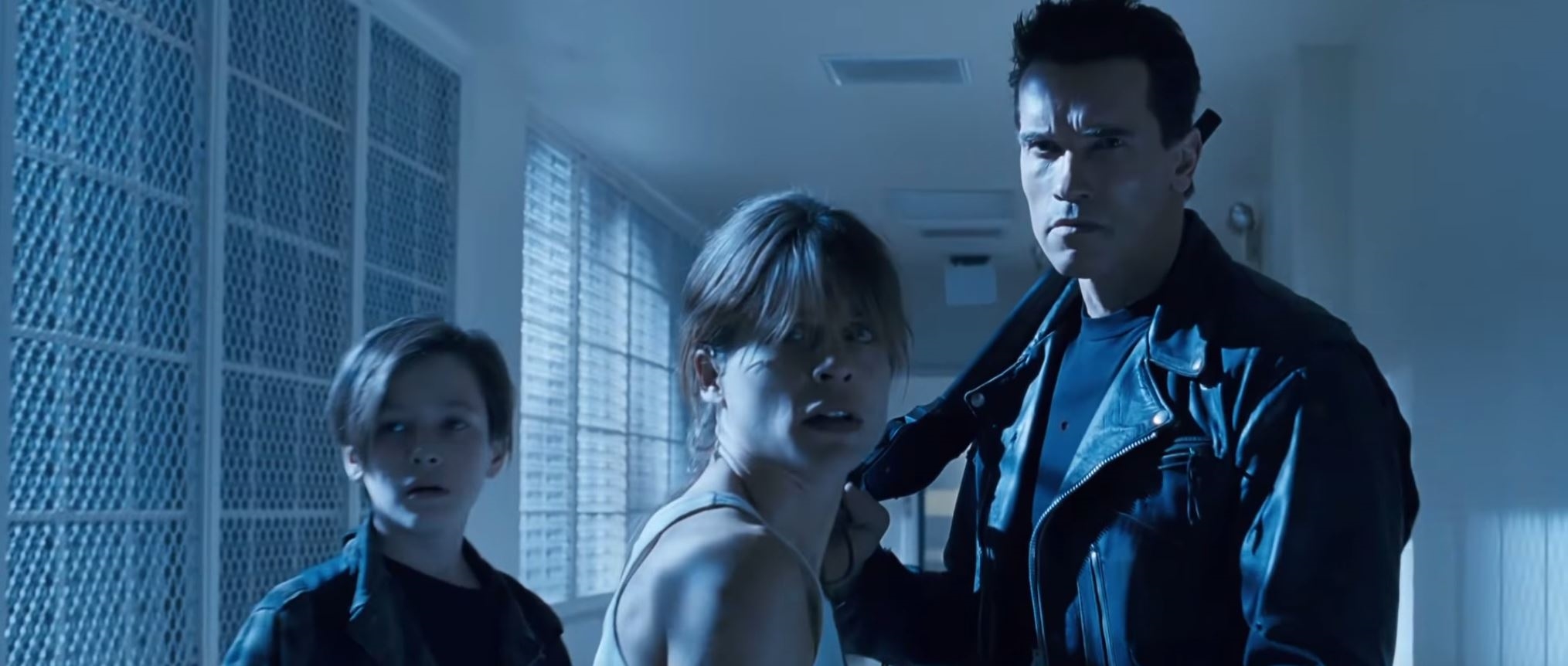Terminator 2: Judgment Day is one of the greatest films ever made. So what’s the point of adding a 3D veneer to bring it back to theaters? Not much, it turns out. In exchange for a slight touch of artificial depth, I found the remaster darker and occasionally blurrier than the original. But really, this isn’t anything new. I had a similar experience a few years ago with the re-release of Jurassic Park — another classic film that was brought back to theaters just for the novelty of seeing it in 3D. As I sat in Brooklyn’s mostly empty Alamo Drafthouse theater this week, I couldn’t help but wonder: When will Hollywood realize these 3D re-releases are a huge waste of time?
Terminator 2: 3D has made just over $1 million in theaters since it debuted on August 25th, according to Box Office Mojo. In Hollywood terms, that’s a disappointing showing, especially since T2 ended up being the highest-grossing movie ever in its time, taking in more than $520 million globally. Jurassic Park 3D, meanwhile, earned $65 million during its theatrical run in 2014, helping to bring the film’s overall take since its original release to more than $1 billion. While that was undoubtedly a success, you could attribute many of those sales to an audience that just really wanted to see more Jurassic Park. (In 2015, the so-so Jurassic World also had a solid global run, earning more than $1.6 billion.)
Instead of paying for an expensive 3D conversion, Hollywood studios would be better off investing in standard 4K remasters of classic films. Sure, that’s not as high a resolution as 35mm film, but it still looks great when projected in modern theaters. It also gives them new versions of films that they can easily resell on 4K Blu-ray, standard Blu-ray and VOD. Ultimately, the path forward is simple: Just let us see classic films in the best quality, without wearing shades.
I’m not against bringing back older films in theaters, especially when they’ve been cleaned up with a spiffy digital restoration. It’s a great way to let audiences experience classics on the big screen — the way they were meant to be seen. But the 3D experience typically adds little to those movies. Since they weren’t shot with 3D in mind, the additional depth is usually subtle. And in cases where it’s more pronounced, it tends to feel forced. These remasters are also stuck with the usual caveats for 3D presentation (more on that below). Ultimately, retrofitting older films with 3D simply feels like a naked grab for higher ticket prices.
I won’t say 3D is entirely useless in theaters. Films like Avatar, Hugo and Gravity have used the technology to deliver truly unique and immersive experiences that wouldn’t be possible with 2D alone. But most 3D films aren’t worth the effort of slipping on a pair of glasses. And you pay dearly in terms of quality too. The 3D shades block out light, just like sunglasses, which leads to a duller and less vibrant image. Many theaters also don’t run their projectors at the proper brightness (I’m looking at you, UA Court Street), which makes things even darker. All in all, with 3D you often end up paying more for something that looks significantly worse than a standard 2D screening.
And there are other issues with 3D as well. If you wear glasses, you have to balance another pair of specs on your nose. You can make a film look blurry or out of focus just by resting your head the wrong way. And there are some people who can’t even register 3D images properly, and instead see a blurrier overall image. While Hollywood isn’t exactly slowing down with 3D films, some big companies, like IMAX (which ironically helped to kick off the whole 3D trend), are ready to move past it. You can still enjoy an immersive cinematic experience, like I did with Dunkirk on IMAX, without going 3D. All you need is a bright and sharp image, along with great sound design.
When it comes to Terminator 2, the 3D was most pronounced in the big action set pieces, and in scenes involving its iconic villain, the liquid metal T-1000. But, this being a film I’ve seen dozens of times, some of the uses of 3D simply felt distracting instead of immersive. Sometimes objects in the foreground were blurred out to shift the focus to the main characters deeper in the frame, but it just felt like there was something blocking my view of the characters. And, as usual, the overall image was darker than I would have liked. That was particularly surprising because the Alamo Drafthouse is dedicated to delivering the best movie presentation possible. It wasn’t their fault the image was dark — it was the fact I was watching it in 3D.
The best aspects of the T2 remaster didn’t involve 3D at all. The film looked cleaner than my current Blu-ray, and night scenes looked sharper, with less grain. But of course, those are improvements we could have had with a standard remaster job. Instead of wasting time and resources on a T2 3D tune-up, I would rather have seen remasters of The Abyss and True Lies, two other James Cameron classics that aren’t even available on Blu-ray today. (Cameron assures us they’re coming eventually.)
(34)

